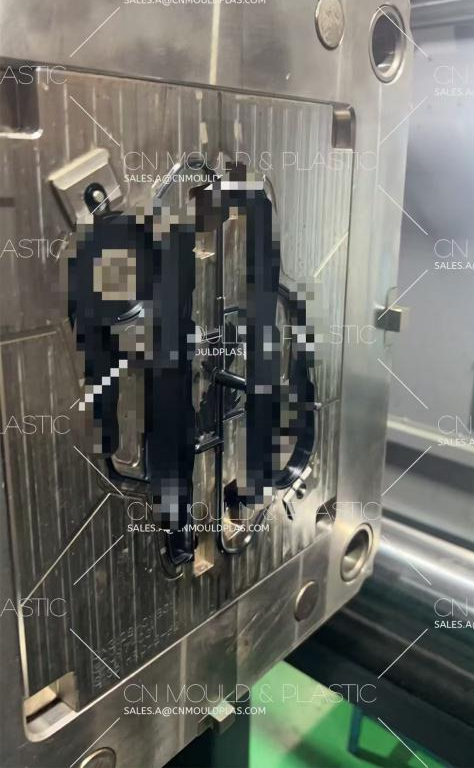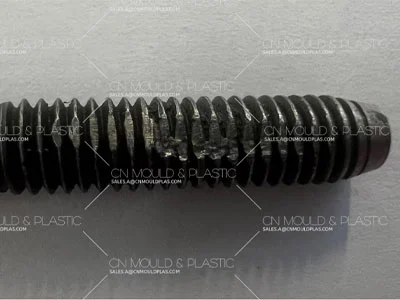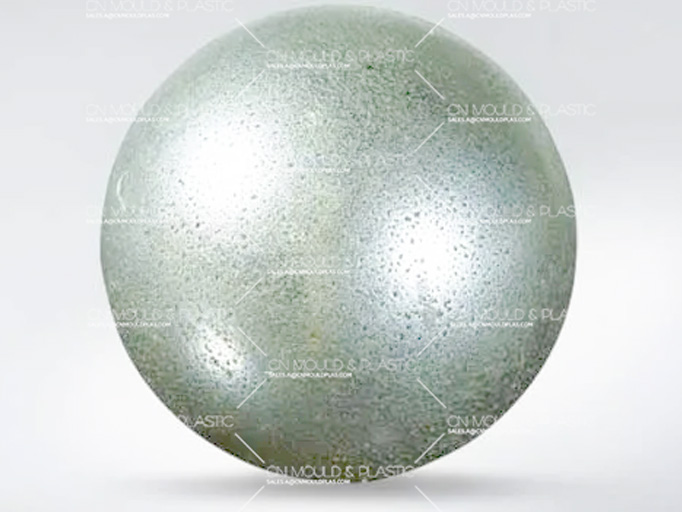Excessive Injection Pressure and Time: If the injection pressure is too high or the injection time is too long, it can lead to excessive filling, resulting in a lower than expected shrinkage rate, making demolding difficult.
High Holding Pressure and Long Holding Time: This can create significant residual pressure in the cavity, complicating the demolding process.
High Melt Temperature: If the melt temperature is too high or the injection pressure is excessive, the hot melt can easily enter the gaps between the mold cores, leading to flashing and poor demolding.
Low Nozzle Temperature, Short Cooling Time, and Interruption in Material Flow: These factors can adversely affect the demolding process.
Improper Mold Temperature Control: If the temperature of the fixed mold is too high, it can cause demolding difficulties. If demolding is challenging at the parting line, the mold temperature can be slightly increased and cooling time reduced. Conversely, if demolding is difficult on the cavity surface, the mold temperature can be lowered or the cooling time increased.

Obstructions Between the Nozzle and Cavity: If there are blockages or if molten plastic leaks between the nozzle and mold, or if the radius of the nozzle's rounded corner is larger than that of the mold, it can lead to leakage issues.
Low Surface Smoothness of the Fixed Mold: Insufficient lubrication or uneven sidewalls can increase demolding resistance, which may be compounded by internal draft angles in the mold.
Imbalanced Feed Points in Multi-Cavity Molds: Uneven feeding can lead to imbalanced filling in different cavities.
Poor Venting Design: Especially in deep tubular parts, this can create a vacuum between the product and core, complicating demolding.
Lower the Barrel Temperature: This will reduce the melt temperature, preventing overflow and related sticking issues.
Properly Reduce Injection Pressure: Shortening injection time, extending cooling time, and preventing material flow interruption can help.
Install Z-Shaped Pulling Rods on the Moving Mold Side: These rods can help pull the components out during demolding.
Introduce a Temperature Differential: Maintain a temperature difference between the moving and static mold sides.
Enhance Plastic Lubrication: If lubrication is insufficient, consider adding an external lubricant to the static mold if permissible.
Adjust Mold Temperature Around the Parting Line: If demolding is difficult at the parting line, slightly increase the mold temperature and reduce cooling time; if difficult on the cavity surface, lower the mold temperature or increase cooling time.
Adjust the Parallelism of the Mold Plates: Ensure that the moving and fixed plates remain parallel to each other.
Ensure Sufficient Ejection Stroke: Control the ejection speed and pressure within an appropriate range.
Polish the Cavity and Flow Channels: Increase the surface smoothness of the cavity and channels. When polishing, ensure that the direction of movement of the polishing tools aligns with the filling direction of the melt.
In production, if sticking occurs during demolding, the first consideration should be whether the injection or holding pressure is too high, leading to excessive filling and causing the material to occupy additional gaps, thereby complicating demolding. The temperature of the material should also be checked; excessive barrel temperature can lead to two main issues: the plastic may decompose and discolor from overheating, resulting in breakage during demolding, or the material may not cool quickly enough after entering the cavity, requiring an extended cooling time. Therefore, the barrel temperature should be adjusted according to the material properties. Finally, mold-related issues should be assessed, as an unbalanced feed can lead to inconsistent cooling rates, increasing the likelihood of sticking during demolding, necessitating mold improvements.

